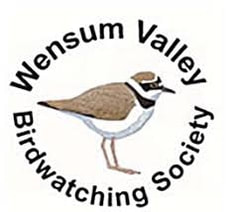|
Speaker: Francis Farrow Reporter: Sue Gale It was fascinating to discover some of the history and origins of Beeston Common from one who is surely its greatest advocate and supporter. The Common lies in a glacial valley, but within that area there are two small hills, of different geological ages. You can see how different they are from the vegetation – Bracken Hill has no heather growing on it, whereas Pillbox Hill does. Between these hills are the valleys that hold the marshes and grasslands that form the many different habitats in this special site. For much of its history the common was grazed, most importantly by goats, keeping the scrub at bay and maintaining the common as a largely open grassy area containing a pond. After the war, however, the grazing ceased and the area became increasingly overgrown with scrub and eventually trees. Francis was able to demonstrate the effects by using old photographs showing the impact of these changes. Another challenge was the change to the water table caused by artesian wells built in the 1960s to provide water for Sheringham. The pond dried out except in the middle of winter.
Many species were lost. Gradually, however, the importance of the common for wildlife was recognised and it began to be managed to restore its former structure. In 1965 it became an SSSI. Some of the heath was cleared and in the 60s and 70s it was grazed by around 20 ponies. Beeston Common Management Group was formed in 1983, comprised of a keen group of volunteers. The first thing they did was to make the pond permanent again. This they did by unblocking the channels and drains that had connected the pond to the adjacent stream. Birds returned, including a Bittern on one celebrated occasion that led to a large twitch around this small pond. Now Kingfishers and Little Egrets are seen. Another challenge overcome eventually by the persistence of the volunteers was the sinking of deep boreholes in the area by Anglian Water in 1993. This was shown to have lowered the water table and caused the stream to run dry. When eventually the bore holes ceased to be used the stream re-appeared and with it the pond. Next the encroaching scrub, reeds etc were cleared from the marshy areas, allowing the return of plants like the Royal Fern and insects like the Long-winged Conehead (a cricket and a first for Norfolk), and resulting in an award from English Nature. EN also provided a management plan and in 2000 the common became an SAC (Special area of Conservation), a European designation. The marshes are maintained by cutting using a fen harvester, a specialist tracked vehicle that enables the cutting and removal of reeds without damage to the wet soil. Sadly, this has not been possible since the pandemic and Francis is urgently seeking another source of this equipment. The heathlands were cleared of most of the gorse, leaving behind gorse ‘islands’ in recognition of its value as a habitat for birds like the Tree Pipit and the Dartford Warbler. Bee banks have been built in this part of the common, and as a result the Ivy Bee and sand wasps are found. 72% of Norfolk’s English Golden Rod (not the garden plant) is now found on the common. Of the 14 Orchid species once found here only a possible 6 remain, but the Keeled Skimmer and Red-veined Darter are now resident, and Barn Owls patrol the area. The grasslands are now mown by the volunteers as there is currently no grazing, but they now host many insects, often specialists associated with only one plant species, like the Marsh Pug (a moth) with the Mouse-ear. Common Fleabane has returned and is often the only nectar source for bees and butterflies in times of drought. The patches of scrub that have been left to form a mosaic are important habitat for birds and insects. Brimstone butterfly, for example, uses the Blackthorn as a food plant. The secondary woodland area is a good resource for migrant birds in Autumn. Spotted Flycatcher, Turtle Dove and Willow Tit are among those that have been spotted here, and even a Red-backed Shrike last year. There have been no Whitethroats this year, sadly, but this could have been one of the effects of climate change. This is one of the big challenges to be faced to ensure the future of Beeston Common as a special site for wildlife. Others are nutrient enrichment (caused by pollution from surrounding areas), lack of grazing, scrub encroachment, a shortage of volunteers and finance. The latter is becoming urgent as the support for wildlife projects has still not been put in place post Brexit, and management costs are still being eked out using the last of the pre-Brexit settlement. Many thanks are due to Francis for introducing us to Beeston Common, and many of us are looking forward to a tour of the common promised in the near future.
0 Comments
Leave a Reply. |
Please feel free to read through our reports from our monthly indoor / online meetings. Archives
May 2024
Categories |

 RSS Feed
RSS Feed
